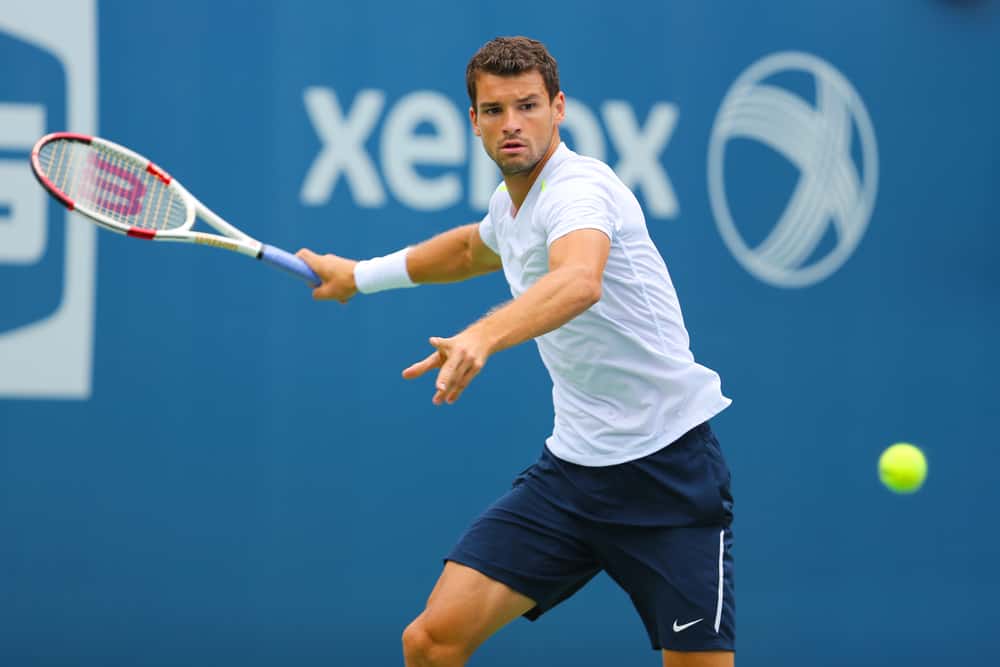Tennis is a sport that requires a combination of physical and mental skills, with technique being a crucial aspect of the game. One of the most important elements of tennis technique is the grip on the racket, as it affects the speed, direction, and spin of the ball. Without a solid grip, it’s almost impossible to score points in a match.
There are several different types of grips in tennis, each with its own unique benefits and drawbacks. Understanding the different grips is crucial for players looking to improve their game and find the right grip for their style of play.
If you’re curious about the types of grips in tennis, read on for a full explanation of each one, along with answers to some frequently asked questions surrounding the topic.
POINTS
- Tennis is a sport that requires technique, and the grip on the racket plays an important role in affecting ball speed, direction, and spin.
- There are several types of tennis grips, each with unique benefits and drawbacks.
- The Continental Grip is versatile but not ideal for generating heavy topspin; the Eastern Forehand Grip allows players to generate more topspin; the Western Forehand Grip generates even more power; the Semi-Western Forehand provides a balance between power and spin; the Two-Handed Backhand adds extra control and power to backhands, while the One-Handed Backhand offers freedom for various shots such as slices or drop shots.
- Different grips work best depending on the personal style of play, strengths/weaknesses & surface being played upon – some may switch during a match.
Continental grip
The continental grip is the most basic grip in tennis and is often used for a variety of shots, including serves, volleys, and overheads. It’s formed by placing the base knuckle of the index finger on the third bevel of the racket handle, with the other fingers wrapping around the handle.
The advantage of the continental grip is its versatility, as it allows players to switch easily between forehand and backhand shots. Additionally, the grip is relatively easy to learn, which makes it a good choice for beginners. But the continental grip is not ideal for generating heavy topspin, which can be a disadvantage when playing against players who are using more advanced grips.
Eastern forehand grip
The eastern forehand grip is a more advanced grip commonly used for forehand shots. This grip is formed by placing the base knuckle of the index finger on the fourth bevel of the racket handle, with the other fingers wrapping around the handle.
The eastern forehand grip allows players to generate more topspin on their shots, which can help keep the ball in play and make it more difficult for opponents to return. This grip can be challenging to master, though, and it requires a lot of practice to develop the proper technique. The eastern forehand grip is not ideal for backhand shots, as it can be difficult to switch quickly between forehand and backhand shots in this position.
Western forehand grip
The western forehand grip is similar to the eastern forehand grip but with a slight twist. The base knuckle of the index finger is placed on the fifth bevel of the racket handle, with the other fingers wrapping around the handle.
The western forehand grip allows for even more topspin and power on forehand shots, which is great for aggressive players. However, this grip can also be difficult to control, especially for those who lack proper technique. It’s important for players to develop good footwork and body positioning when using this grip to maximize its potential.
Semi-western forehand grip
The semi-western forehand grip is a combination of the eastern and western forehand grips. The base knuckle of the index finger is placed between the fourth and fifth bevels of the racket handle, with the other fingers wrapping around the handle.
This grip allows players to generate a good balance of topspin and power on forehand shots, making it a popular choice among players who want more control and versatility. However, controlling the shot and generating enough power for aggressive play can still be challenging.
Two-handed backhand grip
The two-handed backhand grip is popular for players looking to add extra power and control to their backhand shots. It’s formed by using both hands to grip the racket handle, with the base knuckle of the index finger on one hand placed on the third bevel of the racket handle and the base knuckle of the index finger on the other hand placed on the fourth bevel.
The two-handed backhand grip allows players to generate more power and control on backhand shots but can also be slower to execute compared to a one-handed backhand. It can also be more challenging for players to hit low balls or execute slices and drop shots with this grip.
One-handed backhand grip
The one-handed backhand grip is a classic grip used by many of the game’s greatest players. The grip is formed by using one hand to grip the racket handle, with the base knuckle of the index finger placed on the third bevel of the racket handle.
The one-handed backhand grip allows players to generate more power and control on backhand shots and provides more freedom for players to hit a wider variety of shots, such as slices, drop shots, and high topspin shots. This grip can make it more challenging for players to generate enough power on backhand shots, especially when hitting from the baseline.
FAQ
What is the most popular grip in tennis?
The most popular grip in tennis is generally considered to be the eastern forehand grip. The continental grip also falls into this category, as it’s one of the most versatile and widely used.
Which tennis grip is best for beginners?
The continental grip is typically recommended for beginners as it is the easiest grip to learn and provides good control for serving and receiving. It’s considered to be the most versatile of all tennis grips.
What grip do pro tennis players use?
Professional tennis players use a variety of grips, depending on their personal style of play and their strengths and weaknesses. Some of the most popular grips among pros include the eastern forehand grip, the semi-western forehand grip, and the one-handed backhand grip. Players may also switch grips within the same match, depending on their preferences.
What is the difference between the eastern forehand grip and the semi-western forehand grip?
The eastern forehand grip is characterized by its position on the handle, with the base knuckle of the index finger resting on bevels 3 or 4. The semi-western forehand grip is positioned further toward the center of the handle, with the base knuckle of the index finger on bevel 5 or 6.
The difference in the position of the grip results in a slightly different angle of the racket face, leading to different types of spin and power that can be generated with each grip. The eastern forehand grip is generally better for generating topspin, while the semi-western grip allows for a flatter, more powerful shot.
Conclusion
There are several different types of grips in tennis, each with its own advantages and disadvantages. The right grip for you will depend on your personal style of play, your strengths and weaknesses, and the types of shots you want to be able to hit.
It’s worth noting that the grip choice can also be influenced by the surface you’re playing on and the type of shot you want to execute. Depending on the situation, some players may even switch grips during a match.
Whether you’re a beginner or an experienced player, it’s important to experiment with different grips and find which one works best for you. As always, we recommend you get out there and practice, and keep reading our blog for more insightful posts about tennis that will help you improve your game over time!
 Written by Mark Sampson
Written by Mark Sampson